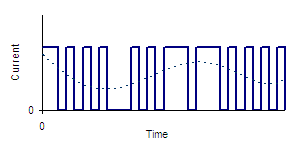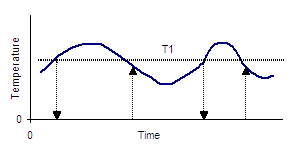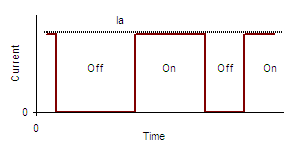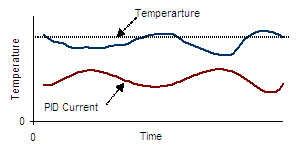Application Tips
Thermoelectric cooler (TEC) is a semiconductor device which is characterized by unique heat pump performance with high efficiency, compactness and durability. The unique ability of TECs to heat and cool, permits them to lower temperature of an object below ambient as well as to stabilize temperature of objects in widely varying ambient conditions.
Here we mention some application tips that can help in optimal use of TECs.
Mounting
Power Supply
Environment
Handling
Heat Dissipation
Reference Data
Brief Summary
POWER SUPPLY
-

PWM Modulation

Relay (On/Off) Control


DC Closed Loop
-
In general several methods could be used for TEC control.
- Pulse Width Modulation
Pulse width modulation (PWM) is a pulsed current with fixed amplitude and variable duty cycle . Pulse width modulation essentially controls the duty cycle as well as the frequency of the power applied to the TEC.
Averaged current delivered by PWM to controlled object is estimated as equivalent of DC current of the same value.
It is true for many applications, but is a great mistake in a case of TECs.
- Relay (On/Off) Control
Relay (On/Off) is the simplest and most crude technique for controlling the temperature. This method of control is the least preferred.
Because the power to the TEC is cycled from full ON to full OFF, thermal cycling of the TEC will occur. It leads to ripples of stabilized temperature and to degrade the life of the TEC unit.
- DC Closed Loop
Among them - Proportional, Proportional-Integral (PI) Control or Proportional-Integral-Derivative (PID) Controls.
In proportional controllers there is always a residual error, even after the controller has settled to the final state. This error is proportional to the difference between the set-point temperature and the ambient temperature.
The residual error present in the proportional controller can be eliminated by the addition of an integrator. PI control is required for systems that have wide variation in either or both the thermal load and ambient temperature.
Full PID control loops are the most complex and are less common. The PID controller adds a derivative circuit to the PI controller which improves the transient response.
TEC is DC current semiconductor device.
Any kind of DC Closed Loop Temperature Control is preferable
High Frequency PWM has large disadvantage for TEC control
Relay regulation gives ripples of temperature and can reduces TEC lifetime


